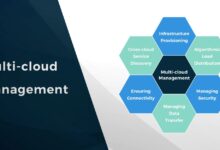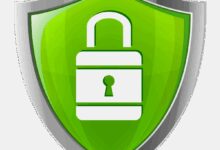Cloud security platform: 5 Best Cloud Security Platforms with Ultimate Protection Power
In today’s digital-first world, a robust cloud security platform isn’t just an option—it’s a necessity. With cyber threats evolving daily, businesses need powerful, scalable, and intelligent solutions to protect their data, applications, and infrastructure in the cloud.
What Is a Cloud Security Platform?

A cloud security platform is a comprehensive suite of tools, policies, and technologies designed to protect data, applications, and infrastructure hosted in cloud environments. These platforms provide centralized visibility, threat detection, compliance enforcement, and automated responses across public, private, and hybrid cloud deployments.
Core Components of a Cloud Security Platform
At its foundation, a cloud security platform integrates several key components that work together to ensure end-to-end protection. These include identity and access management (IAM), data encryption, network security controls, threat intelligence, and continuous monitoring.
- Identity and Access Management (IAM): Ensures only authorized users can access cloud resources.
- Data Loss Prevention (DLP): Monitors and prevents unauthorized data transfers.
- Security Information and Event Management (SIEM): Aggregates and analyzes log data for real-time threat detection.
These components are often delivered through a unified console, enabling security teams to manage risk across multiple cloud providers like AWS, Microsoft Azure, and Google Cloud Platform (GCP).
How It Differs from Traditional Security Tools
Unlike legacy on-premise security systems, a cloud security platform is built for the dynamic nature of cloud environments. Traditional firewalls and endpoint protection tools struggle with the elasticity and distributed architecture of the cloud.
“The cloud doesn’t just change where we store data—it changes how we secure it.” — NIST Special Publication 800-144
Cloud-native platforms use APIs, automation, and machine learning to adapt to changing workloads, auto-scale protections, and detect anomalies in real time. This agility makes them far more effective than static, perimeter-based defenses.
Top 5 Cloud Security Platforms in 2025
As organizations migrate more workloads to the cloud, choosing the right cloud security platform becomes critical. Below are five of the most powerful and widely adopted platforms in 2025, each offering unique strengths for different business needs.
1. Palo Alto Networks Prisma Cloud
Prisma Cloud is widely regarded as the most comprehensive cloud security platform on the market. It offers full lifecycle protection—from development to runtime—across multi-cloud environments.
- Provides cloud workload protection (CWP), cloud security posture management (CSPM), and cloud-native application protection (CNAPP).
- Integrates seamlessly with CI/CD pipelines for DevSecOps workflows.
- Offers real-time threat detection using behavioral analytics and AI-driven insights.
Prisma Cloud supports over 50 cloud services and integrates with major DevOps tools like Jenkins, Terraform, and Kubernetes. Its unified policy engine allows consistent security enforcement across AWS, Azure, GCP, and Oracle Cloud.
Learn more at Palo Alto Networks’ official site.
2. Microsoft Defender for Cloud
For organizations deeply invested in the Microsoft ecosystem, Defender for Cloud offers a tightly integrated cloud security platform that extends Azure Security Center’s capabilities.
- Delivers unified security management and advanced threat protection across hybrid cloud workloads.
- Automatically assesses security posture and provides actionable recommendations.
- Includes built-in compliance dashboards aligned with standards like GDPR, HIPAA, and NIST.
One of its standout features is secure score—a quantifiable metric that helps organizations measure and improve their cloud security posture over time. Defender for Cloud also integrates with Microsoft Sentinel for extended SIEM and SOAR capabilities.
Explore further at Microsoft’s Defender page.
3. AWS Security Hub
AWS Security Hub is Amazon’s native cloud security platform designed to centralize security alerts and automate compliance checks across AWS accounts and services.
- Aggregates findings from AWS services like GuardDuty, Inspector, and Macie.
- Supports custom actions and automated remediation via AWS Lambda and Step Functions.
- Offers integration with third-party tools through partner programs.
Security Hub uses the AWS Foundational Security Best Practices standard to evaluate configurations and identify deviations. It also supports multi-account environments through AWS Organizations, making it ideal for large enterprises.
Visit AWS Security Hub for detailed documentation and setup guides.
4. Google Cloud Security Command Center
Google Cloud’s Security Command Center (SCC) is a powerful cloud security platform tailored for GCP users, offering asset inventory, vulnerability scanning, and threat detection in a single pane of glass.
- Provides real-time visibility into cloud assets and misconfigurations.
- Integrates with Chronicle for advanced threat hunting and log analysis.
- Supports container security, including Kubernetes and Anthos clusters.
SCC Premium edition includes event threat detection powered by machine learning, enabling proactive identification of suspicious activities such as unusual API calls or privilege escalations.
More information available at Google Cloud SCC.
5. CrowdStrike Falcon Cloud Security
CrowdStrike, known for its endpoint protection, has expanded into the cloud with Falcon Cloud Security—a modern, lightweight platform focused on speed and simplicity.
- Leverages the Falcon sensor to provide workload protection across cloud environments.
- Offers CSPM, CWP, and CIEM (Cloud Infrastructure Entitlement Management) in one platform.
- Uses AI-powered risk scoring to prioritize threats based on business impact.
Falcon Cloud Security stands out for its agentless scanning and deep integration with CrowdStrike’s threat intelligence database, which tracks over 175+ adversary groups.
Check out CrowdStrike’s cloud offering for deployment options and pricing.
Key Features to Look for in a Cloud Security Platform
Not all cloud security platforms are created equal. When evaluating solutions, organizations should focus on specific capabilities that align with their risk profile, compliance requirements, and operational model.
Cloud Security Posture Management (CSPM)
CSPM is a foundational feature of any effective cloud security platform. It continuously monitors cloud configurations against best practices and compliance frameworks to detect misconfigurations that could lead to breaches.
- Automatically identifies open S3 buckets, overly permissive IAM roles, and unencrypted databases.
- Maps findings to regulatory standards like CIS Benchmarks, PCI DSS, and SOC 2.
- Enables drift detection to ensure configurations remain compliant after changes.
According to Gartner, “By 2026, organizations using CSPM tools will reduce cloud misconfiguration-related incidents by 80%.”
Cloud Workload Protection (CWP)
CWP focuses on securing virtual machines, containers, and serverless functions running in the cloud. This includes vulnerability management, runtime protection, and malware detection.
- Scans images in registries before deployment to catch vulnerabilities early.
- Monitors processes and system calls during runtime to detect malicious behavior.
- Supports both agent-based and agentless inspection methods.
Effective CWP solutions integrate with orchestration platforms like Kubernetes and provide zero-trust enforcement at the workload level.
Cloud Infrastructure Entitlement Management (CIEM)
CIEM addresses the growing challenge of excessive permissions in cloud environments. It discovers, analyzes, and remediates overprivileged identities across multi-cloud infrastructures.
- Maps identity relationships and access paths across cloud accounts.
- Recommends least-privilege policies based on usage patterns.
- Prevents privilege escalation attacks and lateral movement by adversaries.
As cloud environments grow more complex, CIEM is becoming a non-negotiable component of any mature cloud security platform.
Benefits of Using a Cloud Security Platform
Deploying a cloud security platform brings numerous strategic advantages beyond basic threat protection. These benefits span operational efficiency, regulatory compliance, and business resilience.
Centralized Visibility Across Multi-Cloud Environments
One of the biggest challenges in cloud security is fragmentation. Organizations often use multiple cloud providers, each with its own console and security tools. A unified cloud security platform consolidates alerts, logs, and policies into a single dashboard.
- Reduces mean time to detect (MTTD) and mean time to respond (MTTR).
- Enables security teams to correlate events across AWS, Azure, and GCP.
- Improves collaboration between DevOps and SecOps teams.
This centralized view is essential for maintaining control in complex, distributed architectures.
Automated Compliance and Audit Readiness
Compliance is a major driver for adopting a cloud security platform. These platforms automate the collection of evidence and generate reports required for audits under regulations like HIPAA, GDPR, and ISO 27001.
- Tracks configuration changes and user activities for audit trails.
- Provides pre-built templates for common compliance frameworks.
- Highlights gaps and suggests remediation steps.
Automation reduces the burden on compliance officers and minimizes human error during audits.
Proactive Threat Detection and Response
Modern cloud security platforms go beyond reactive monitoring. They use behavioral analytics, machine learning, and threat intelligence to detect anomalies before they become incidents.
- Identifies insider threats through user and entity behavior analytics (UEBA).
- Integrates with SOAR (Security Orchestration, Automation, and Response) for automated playbooks.
- Supports real-time alerting via email, Slack, or SIEM systems.
This proactive stance allows organizations to stay ahead of attackers who exploit cloud misconfigurations and weak access controls.
Challenges in Implementing a Cloud Security Platform
Despite their benefits, deploying a cloud security platform comes with challenges that organizations must navigate carefully.
Complex Integration with Existing Tools
Integrating a new cloud security platform with existing IT systems—such as SIEM, IAM, and DevOps pipelines—can be technically demanding. APIs may be inconsistent, and data formats may vary across vendors.
- Requires skilled personnel or third-party consultants for setup.
- May involve custom scripting to normalize logs and alerts.
- Can lead to alert fatigue if not properly tuned.
To mitigate this, organizations should conduct thorough proof-of-concept testing before full deployment.
Cost Management and Licensing Models
Cloud security platforms often use consumption-based pricing, which can lead to unexpected costs as cloud usage scales. Some vendors charge per workload, per API call, or per gigabyte of data scanned.
- Costs can spiral if scanning is enabled across all regions and accounts.
- Licensing complexity increases in multi-cloud environments.
- Free tiers may lack critical features like automated remediation.
Best practice: Start with a pilot program, monitor usage closely, and negotiate enterprise agreements when possible.
Skills Gap and Training Requirements
Operating a cloud security platform effectively requires specialized knowledge in cloud architecture, security policies, and automation. Many organizations lack in-house expertise.
- Security teams need training on cloud-specific threats like cryptojacking and shadow IT.
- DevOps engineers must understand secure coding and infrastructure-as-code (IaC) scanning.
- Ongoing education is needed to keep up with evolving platform features.
Vendors often provide certification programs—such as Palo Alto’s CNPP training or AWS’s Security Specialty certification—to help bridge the gap.
How to Choose the Right Cloud Security Platform
Selecting the right cloud security platform depends on several factors, including your cloud strategy, industry, and internal capabilities.
Assess Your Cloud Environment and Risk Profile
Begin by mapping your current cloud footprint: Which providers do you use? How many accounts and workloads are in production? What data is classified as sensitive?
- Organizations with a single-cloud strategy may benefit from native tools like AWS Security Hub or Microsoft Defender.
- Multi-cloud or hybrid environments require a vendor-agnostic platform like Prisma Cloud or CrowdStrike Falcon.
- Highly regulated industries (e.g., finance, healthcare) need strong compliance reporting features.
A risk assessment will help prioritize which capabilities matter most—whether it’s data encryption, access control, or incident response.
Evaluate Vendor Support and Ecosystem
Even the most advanced cloud security platform is only as good as the support behind it. Consider the vendor’s track record for uptime, customer service, and threat research.
- Look for vendors with 24/7 support and dedicated customer success managers.
- Check integration partners—does the platform work with your existing SIEM, ticketing, or identity provider?
- Review analyst reports from Gartner, Forrester, or IDC for independent validation.
Platforms with active developer communities and robust API access tend to offer greater flexibility and faster innovation.
Test Before You Invest: Conduct a Proof of Concept
Never commit to a cloud security platform without testing it in your environment. Most vendors offer free trials or sandbox environments.
- Deploy the platform in a non-production account to evaluate performance.
- Simulate common threats (e.g., unauthorized access, data exfiltration) to test detection capabilities.
- Gather feedback from both security and operations teams on usability.
A successful PoC should answer: Does it reduce alert noise? Can it integrate smoothly? Does it improve our security posture?
Future Trends in Cloud Security Platforms
The cloud security landscape is rapidly evolving. Emerging technologies and shifting threat vectors are shaping the next generation of cloud security platforms.
Rise of AI and Machine Learning in Threat Detection
Artificial intelligence is becoming a core component of cloud security platforms. AI models analyze vast amounts of telemetry data to identify subtle patterns indicative of compromise.
- Machine learning detects zero-day attacks by identifying deviations from normal behavior.
- Natural language processing (NLP) helps parse security logs and generate human-readable summaries.
- Generative AI is being used to create automated incident response playbooks.
However, AI also introduces new risks—such as adversarial attacks that fool models—so transparency and model validation are critical.
Integration with DevSecOps and CI/CD Pipelines
Security is no longer a gate at the end of development. Modern cloud security platforms are embedding security into the software development lifecycle.
- IaC scanning tools (like Checkov or Terrascan) are integrated directly into CI/CD pipelines.
- Security gates prevent deployments with high-risk vulnerabilities.
- Shift-left security ensures issues are caught early, reducing remediation costs.
This trend is driving demand for cloud security platforms that speak the language of developers and integrate seamlessly with Git, Jenkins, and GitHub Actions.
Zero Trust Architecture in the Cloud
Zero Trust—“never trust, always verify”—is becoming the gold standard for cloud security. Platforms are adopting Zero Trust principles by enforcing strict identity verification and micro-segmentation.
- Continuous authentication replaces static passwords with adaptive risk-based checks.
- Workload-to-workload communication is encrypted and authorized via service mesh technologies.
- Network perimeters are replaced with identity-centric policies.
As remote work and hybrid cloud usage grow, Zero Trust will be a defining feature of future cloud security platforms.
What is a cloud security platform?
A cloud security platform is a unified solution that protects data, applications, and infrastructure in cloud environments. It includes tools for threat detection, compliance, identity management, and automated response across public, private, and hybrid clouds.
Why do I need a cloud security platform?
You need a cloud security platform to defend against misconfigurations, unauthorized access, data breaches, and compliance violations. As cloud environments grow in complexity, manual security practices become insufficient.
Which cloud security platform is best for AWS?
AWS Security Hub is a strong native option, but third-party platforms like Palo Alto Prisma Cloud and CrowdStrike Falcon offer deeper multi-cloud capabilities and advanced threat protection.
Can a cloud security platform stop ransomware?
Yes, modern cloud security platforms can help prevent ransomware by detecting suspicious behavior, blocking malicious processes, and enforcing least-privilege access. However, they should be part of a broader defense-in-depth strategy.
How much does a cloud security platform cost?
Costs vary widely—from free tiers with limited features to enterprise plans costing tens of thousands per month. Pricing is typically based on workload count, data volume, or subscription tiers.
Choosing the right cloud security platform is one of the most important decisions an organization can make in its digital transformation journey. With cyber threats growing in sophistication and scale, relying on fragmented or outdated tools is no longer viable. Platforms like Palo Alto Prisma Cloud, Microsoft Defender for Cloud, and AWS Security Hub offer powerful, integrated solutions that provide visibility, automation, and intelligent protection across cloud environments. By understanding your needs, evaluating key features, and staying ahead of emerging trends like AI and Zero Trust, you can build a resilient cloud security posture that protects your business now and in the future.
Recommended for you 👇
Further Reading:









